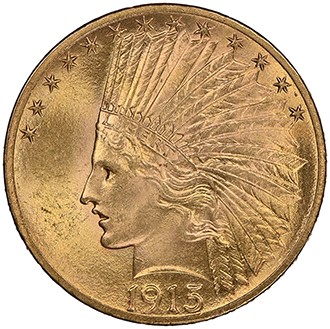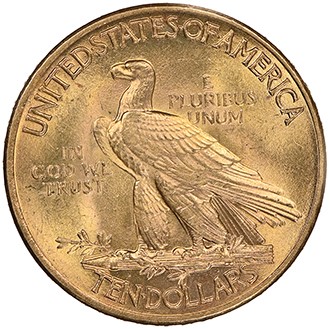Counterfeit Detection: 1915 Indian Head Eagle
Posted on 11/16/2022
The United States struck Indian Head eagles (gold $10) from 1907 until 1933, when it stopped minting gold coins and criminalized the private accumulation of the precious metal. Only a few rare date-and-mintmark combinations appear in the series, though the 1915 Philadelphia issue is not on that list.
Recently, a purported example of a 1915 eagle was submitted to Numismatic Guaranty Company (NGC). The most obvious red flag is repeating depressions that match a known fake. These marks appear when a counterfeit die is created using a genuine coin. Any contact marks on that coin appear on the dies and any subsequent fakes that are struck from the dies. However, these transferred impressions are shallower and tend to have the same luster as the fake specimen.
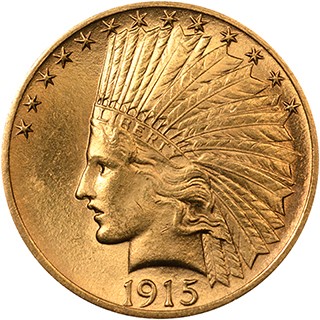 |
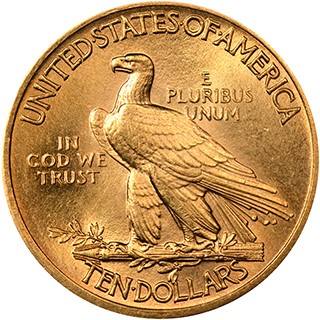 |
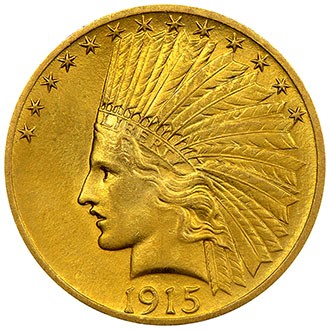 |
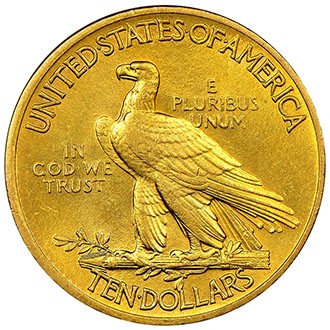 |
| Depressions on the submitted coin (top) match those of a known fake (bottom). The counterfeit also has the wrong luster and a slight loss of detail on the high points. Click images to enlarge. |
|
A genuine common-date eagle carries very little numismatic premium, save for examples in high mint-state grades. Therefore, it might be surprising to learn that this piece is actually made of gold and is the correct weight.
So why would a counterfeiter create such a coin? For one, there’s a financial incentive (albeit a small one). Such a common coin would likely face less scrutiny when offered for sale. Some buyers might even skip third-party authentication and grading. A second possibility is that it was struck to circumvent the aforementioned 1933 gold ban, which wasn’t formally rescinded until 1974. Soon after the law went into effect, gold prices rose. However, the ban carried an exception that allowed individuals to own a small number of gold coins so long as they had numismatic value. Therefore, there was motivation to turn, say, an illegally held gold bar into what appears to be legitimate U.S. gold coins.
Regardless of its precious-metal content, an Indian Head eagle has no numismatic value when it is a counterfeit. If you want to be sure you are buying the real deal, remember that NGC backs its determinations of authenticity and grade with the NGC Guarantee.
Reproduced with permission from the August 2022 edition of The Numismatist, an official publication of the American Numismatic Association.
Did you know? NGC has created a comprehensive Counterfeit Detection resource to help collectors and dealers identify counterfeit and altered coins. Visit NGCcoin.com/counterfeit.
Stay Informed
Want news like this delivered to your inbox once a month? Subscribe to the free NGC eNewsletter today!
